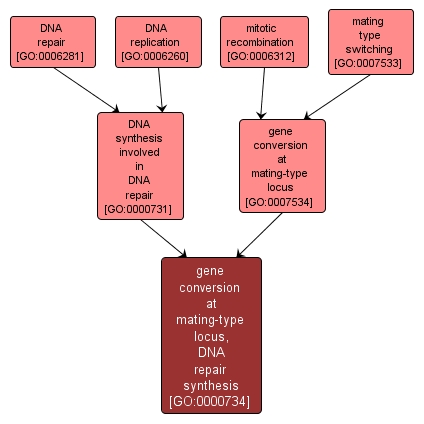GO TERM SUMMARY
|
| Name: |
gene conversion at mating-type locus, DNA repair synthesis |
| Acc: |
GO:0000734 |
| Aspect: |
Biological Process |
| Desc: |
Synthesis of DNA that proceeds from the broken 3' single-strand DNA end uses the homologous intact duplex as the template during gene conversion at the mating-type locus. |
|

|
INTERACTIVE GO GRAPH
|














